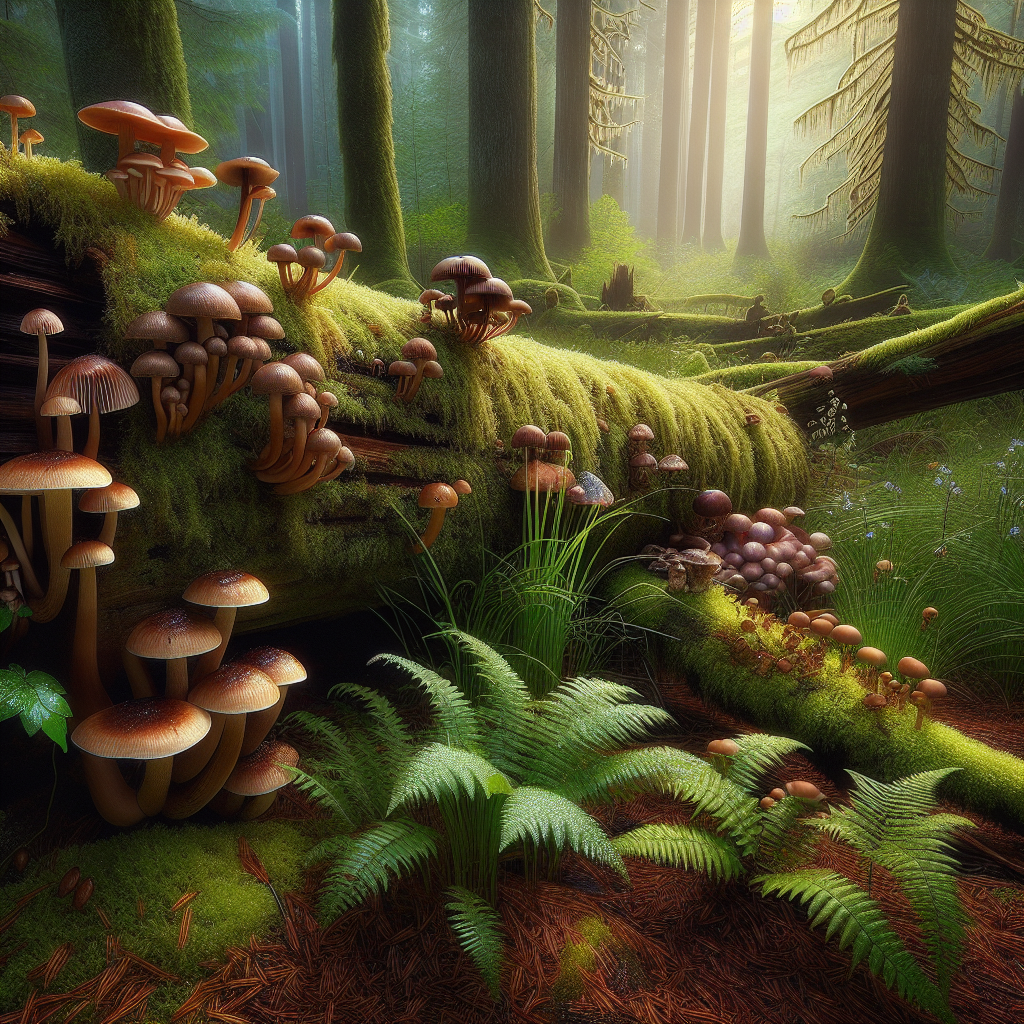Title: Oregon’s Treasures Underfoot: A Beginner’s Guide to Mushroom Identification
Oregon is a mushroom hunter’s paradise, with its lush landscapes teeming with a vast array of fungi year-round. Whether in the verdant rainforests of the Coastal Range, the high-desert Ponderosas of Central Oregon, or even in your own backyard, the thrill of the hunt and the reward of a fresh, wild find is hard to beat.
Getting Started on Your Mycological Journey
Starting out in mushroom identification can feel a bit overwhelming. But with a little patience, a good field guide, and a spot of guidance, anyone can unlock the secrets of the fungal kingdom. And never be afraid to ask for help; the Oregon Mycological Society is always eager to assist with identification and information.
Remember your preparations before you head out. A reliable field guide, a good knife for cutting mushrooms, a basket for collecting, and a hand lens for close examination are essential. Always wear good, sturdy footwear and weather-appropriate clothing. In Oregon, dressing in layers is a must, particularly in the coastal regions where weather can change rapidly, going from sunny and warm to wet and windy in the blink of an eye.
Embrace the element of surprise. As any experienced Oregonian mushroom gatherer will tell you, finding a coveted King Bolete in the Cascade Range is as exciting as uncovering a patch of common Crepidotus on a fallen Bigleaf Maple branch.

The Big Five: Oregon’s most common mushrooms
In Oregon, there are five commonly encountered species that are both easily recognizable and safe for consumption.
Chanterelles found in the mossy forests of the Coastal Range are a culinary delight. Their yellow-orange color and vase-like shape, coupled with a unique apricot scent, make them an unmistakable find.
Morels, natural wonders of the high desert and burned areas of the Cascade foothills, are cherished worldwide. These hollow, honeycombed caps pop up in the spring and are a must on any forager’s list.
King Boletes are often found in mixed coniferous forests, especially those highlighted by old-growth Ponderosa Pines. These impressive mushrooms truly live up to their regal name with their large, dark brown caps and sponge-like under surface.
Hedgehog Mushrooms are found in a wide variety of habitats across Oregon. Their sweet, nutty flavor and unique teeth-like gills make them a standout.
Lobster Mushrooms emerge in late summer to early fall. Known for their bright orange-red color (resembling cooked lobster), their parasitic transformation of host mushrooms renders them easily identifiable.
Safety Measures and Ethics
Never eat a mushroom unless you are 100% certain of its identification. A casual nibble of misidentified Deadly Galerina or Poison Pie could have severe health repercussions. But that’s not to inspire fear; instead, think of it as a tribute to the power and intrigue of mushrooms.
Oregon’s picturesque landscapes are precious, and locals deeply respect their natural beauty. As a visitor, always follow the golden rule of foraging: take only pictures, leave only footprints. When you do pick mushrooms, avoid taking all you find. Always leave some behind for wildlife and future foragers, ensuring our forests remain healthy and full of fungal wonder.
Celebrating Oregon’s Mushroom Bounty
The thrill of the hunt and the joy of discovery make mushroom foraging an enriching pastime. Seasonal mushroom festivals across Oregon celebrate this unique aspect of our state’s bounty. The Mt. Pisgah Mushroom Festival or the Estacada Festival of the Fungus warmly welcome enthusiasts and newcomers alike.
When your day of mushroom hunting draws to an end, it’s time to cook up your finds. Many locals enjoy a simple sauté of Chanterelles with garlic served on a fresh loaf from Ken’s Artisan Bakery. Or perhaps fire up a wood-fired pizza topped with caramelized onions and Lobster Mushrooms purchased from Portland Farmers Market.
Wrap-up and a Warm Welcome
So there you have it – a beginner’s guide to mushroom identification in the beautiful state of Oregon. It’s a love letter from a fellow local, who adores the varied landscapes, values the vibrant communities, and savors the lush bounty that our state offers. Remember, the joy of mushroom foraging isn’t just about the edible treasures you might find. It’s also about the journey, the scenery, connections with nature, and memories made along the trails that wind through the heart of Oregon. Welcome to this fascinating foray, friend!
